

Ecology. Colony Collapse Disorder video and article.
Population Ecology. Ecosystems. Biomes. World of 7 Billion. : BioMath. Quorum Sensing: Organisms Communicating and Coordinating We live in an ever-changing world.
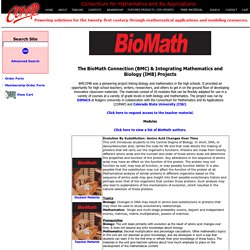
Many people crave information about those changes. As a result, new means of communicating are continually evolving. People originally relied on word of mouth. With the invention of the printer, newspapers spread information to more people, more quickly. Later, telephones, television, cell phones and the Internet increased both the rate at which people could communicate and the number of people that the information reached. Topics Biology: This unit discusses bacterial growth and communication. Prerequisites Biology: A basic understanding of cell structure and functions along with the Central Dogma would be helpful, but is not necessary. : PS-Future. Invasive Species A Module in Planning for Sustainability About This Module: This module focuses on the role of non-native species in ecosystems.
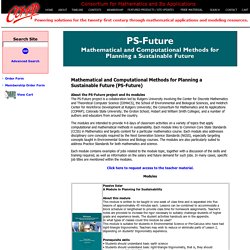
Students explore local examples of such species, including how and why these species become established in ecosystems. Then, after working through the concept of population growth and competitive exclusion, students work with a hands-on randomized simulation model to explore how the number of individuals of a nonnative (or an exotic) species population might influence the ability of that species to take hold and become invasive, doing damage to the ecosystem. A second deterministic model raises questions about how the spatial pattern of an invasion can impact the effectiveness of efforts to contain or slow invasive spread. Climate Change and Human Impact: Extinction vs. Evolution. What’s so great about the Great Lakes? - Cheri Dobbs and Jennifer Gabrys. Think about your family members.
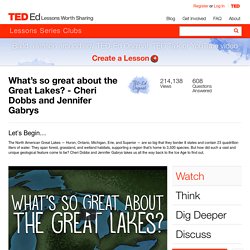
You are all related, but are you all the same? While the five Great Lakes are physically connected to one another, each has a unique set of characteristics, much like children living within the same family. Ecosystems and Invasive Species. Niche Partitioning and DNA Metabarcoding. Biology Cycling of Matter. All life is dependent on energy and matter.
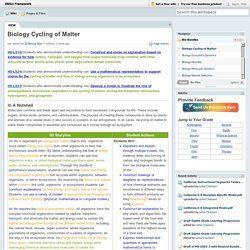
Due to this, organisms must obtain energy and matter from other organisms or from the environment around them. By better understanding the flow of energy and cycling of matter in an ecosystem, students can see how organisms make, or obtain biological molecules like sugars, amino acids, proteins, and carbohydrates. Through this bundle of performance expectations, students can see how matter and energy are not created or destroyed but recycled within organisms, between organisms, or within ecosystems.
By examining the inputs and outputs within systems like cells, organisms, or ecosystems students can construct explanations for how energy and matter flow in that system. Students can use a variety of models to explore the flow of energy and matter in such systems (physical, mathematical or computer models). Biology Cycling of Energy. HS-LS1-5 Students who demonstrate understanding can: Use a model to illustrate how photosynthesis transforms light energy into stored chemical energy.
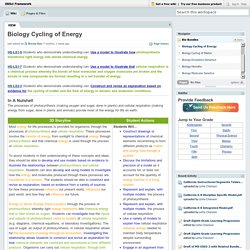
HS-LS1-7 Students who demonstrate understanding can: Use a model to illustrate that cellular respiration is a chemical process whereby the bonds of food molecules and oxygen molecules are broken and the bonds in new compounds are formed resulting in a net transfer of energy. HS-LS2-3 Students who demonstrate understanding can: Construct and revise an explanation based on evidence for the cycling of matter and the flow of energy in aerobic and anaerobic conditions. Biology Ecosystem Dynamics. Exploring Biomass Pyramids. This activity is based on the fieldwork of ecologist Dr.
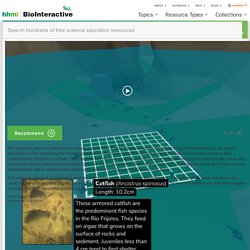
Mary Power. Students explore the nature of trophic relationships in an aquatic ecosystem by first measuring the biomass of algae and then estimating the number of fish that could be supported based on their understanding of trophic pyramids. They discover that biomass pyramids can be inverted in aquatic ecosystems and then they work with productivity rates to realize that the trophic pyramids are a conventional shape when productivity is integrated over time. Finally, they use authentic field data to determine the relationship between sunlight and biomass in river pools. This resource was built on interactive platform with multiple pathways through the interactive.
CarbonTIME. Rabbit plagues in Australia. How Whales Became the Biggest Animals on the Planet - NYTimes.com. Life Under a Rock: Bacteria in Extreme Environments. The world’s deserts are harsh environments.
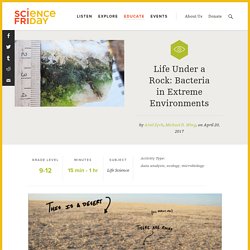
Some are extremely hot like the Sahara in Africa, while others are frozen deserts, like those in the polar regions. What unites them is that they are all very dry, receiving little annual precipitation. Predator Prey Tag. Oh deer. Adventures in Ecology - eBooks. Why a Hawk Is a Hummingbird’s Best Friend. You know what they say about location and real estate.
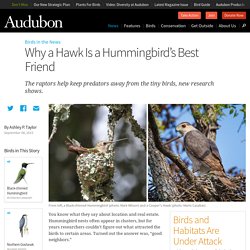
Hummingbird nests often appear in clusters, but for years researchers couldn’t figure out what attracted the birds to certain areas. Turned out the answer was, “good neighbors.” Biologist Harold Greeney was doing fieldwork in Arizona in 2007 when he and his team realized that breeding hummingbirds often clustered around hawk nests. By 2009, Greeney and company were able to report that the hummers nesting close to hawks were actually more successful at raising chicks. Now, in a study published last week in Science Advances, they are unveiling research into exactly why that seems to be the case. Ecology Environmental Letter. Ecology Ecology Interactions in Action. Concord Consortium. In the fall of 2011, SmartGraphs conducted a randomized experimental trial in 29 Pennsylvania schools.
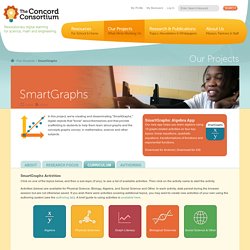
In 14 schools, 17 experimental teachers used SmartGraphs activities with 49 8th and 9th grade Physical Science classes studying the motion of objects (such as position-time and velocity-time graphs). In the other 15 schools, 18 control teachers taught the same topic using the same textbooks, with 42 Physical Science classes. This study sought to answer two research questions. Ecology. Incredible Footage Of A Hermit Crab Tricking Out Her Shell - Video. Population Explosion. Copyright© Copyright The Concord Consortium Record Link <a href="stem-resources/population-explosion">The Concord Consortium.
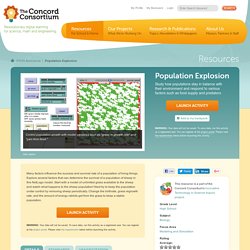
Population Explosion. Concord: The Concord Consortium, 2010, September 15. </a> AIP Population Explosion (The Concord Consortium, Concord, 2010, September 15), WWW Document, ( AJP Population Explosion (The Concord Consortium, Concord, 2010, September 15), WWW Document, ( APA Population Explosion. (2010, September 15). African Lions: Modeling Populations. Copyright© Copyright The Concord Consortium Record Link <a href="stem-resources/african-lions-modeling-populations">The Concord Consortium.
African Lions: Modeling Populations. Concord: The Concord Consortium, 2013, October 24. </a> AIP African Lions: Modeling Populations (The Concord Consortium, Concord, 2013, October 24), WWW Document, ( Kill All the Mosquitoes?! They Released 14 Wolves Into A Park. What Happens Next Is A Miracle And Proves That We Must Take Care Of Our Amazing Planet. Should%20We%20Reclassify%20the%20Wolf%20Town%20Hall%20Debate. IMAGE 2. Zombie Parasites - Nat Geo Live. Ecology Disrupted. Using real scientific data to link daily life to environmental issues and ecological functions in secondary school science classrooms. These case study units engage students in real scientific research that has been published in peer-reviewed scientific journals.
The research is introduced through the use of videos produced by the Museum's Science Bulletins program. BUG LYPHE lesson plan. Using the Carbon Cycle Interactive Game in the Classroom - Windows to the Universe. BUG LYPHE lesson plan. Photosynthesis. The Carbon Cycle Game.
Energy Flow Through Ecosystems. PS3 Ecology Institute. Microsoft Word - LabFoodChains2008.doc - LabFoodChains2008.pdf. Anna_Scott_GA Share_a_thon_lesson.pdf. Ecology Questions - Google Sheets. Teacher Resources, Lessons, Plans, Activities. Population Issues & Facts - Population Connection. Species and Their Feces. The world as you've never seen it before. Biomagnification. Ecology. That's Why Carbon Is A Tramp: Crash Course Biology #1.
WolfQuest. The Population Biology of Isle Royale Wolves and Moose: An Overview. 1. KILL 'EM ALL. Biomes of the World - Biome Map.